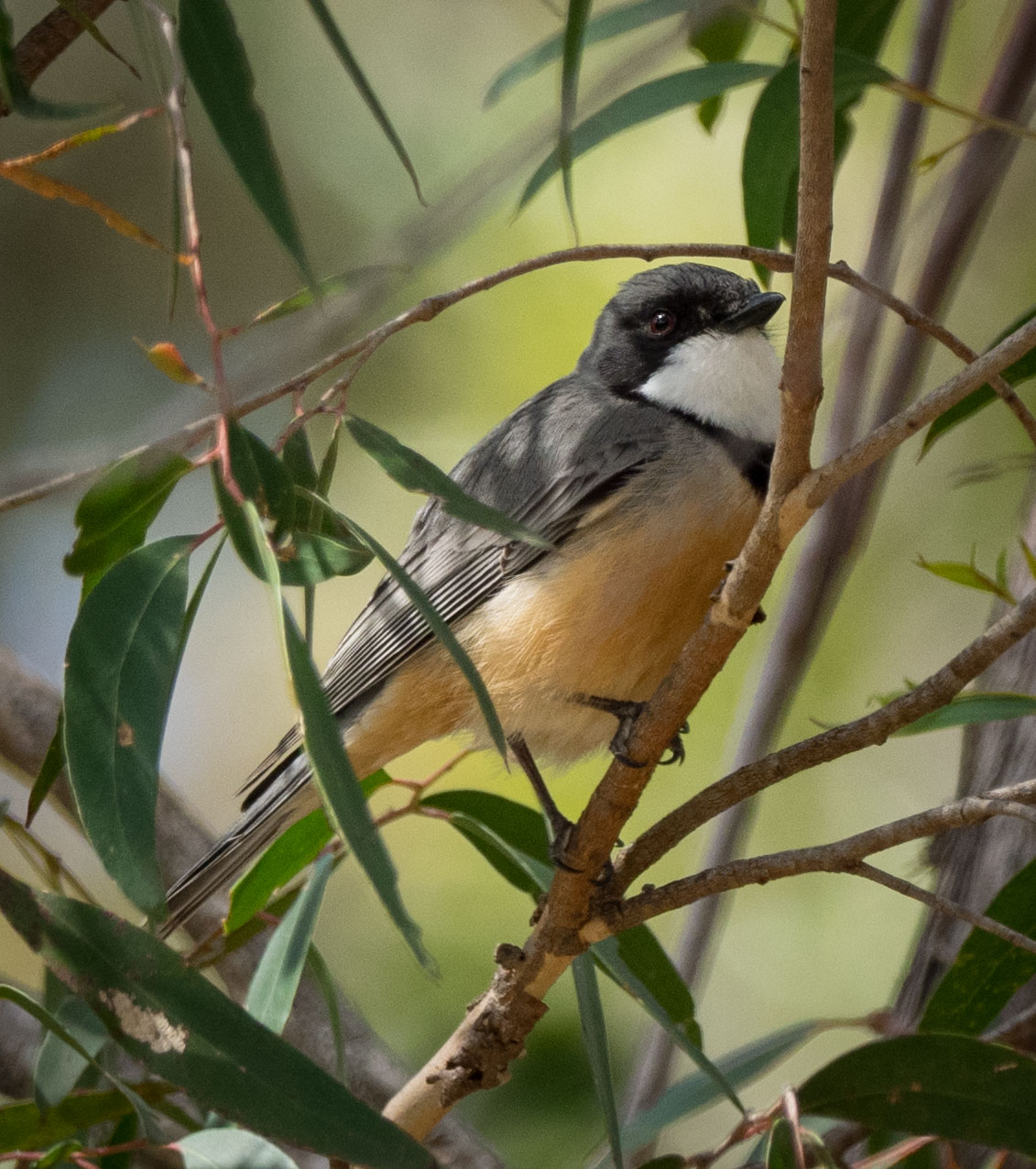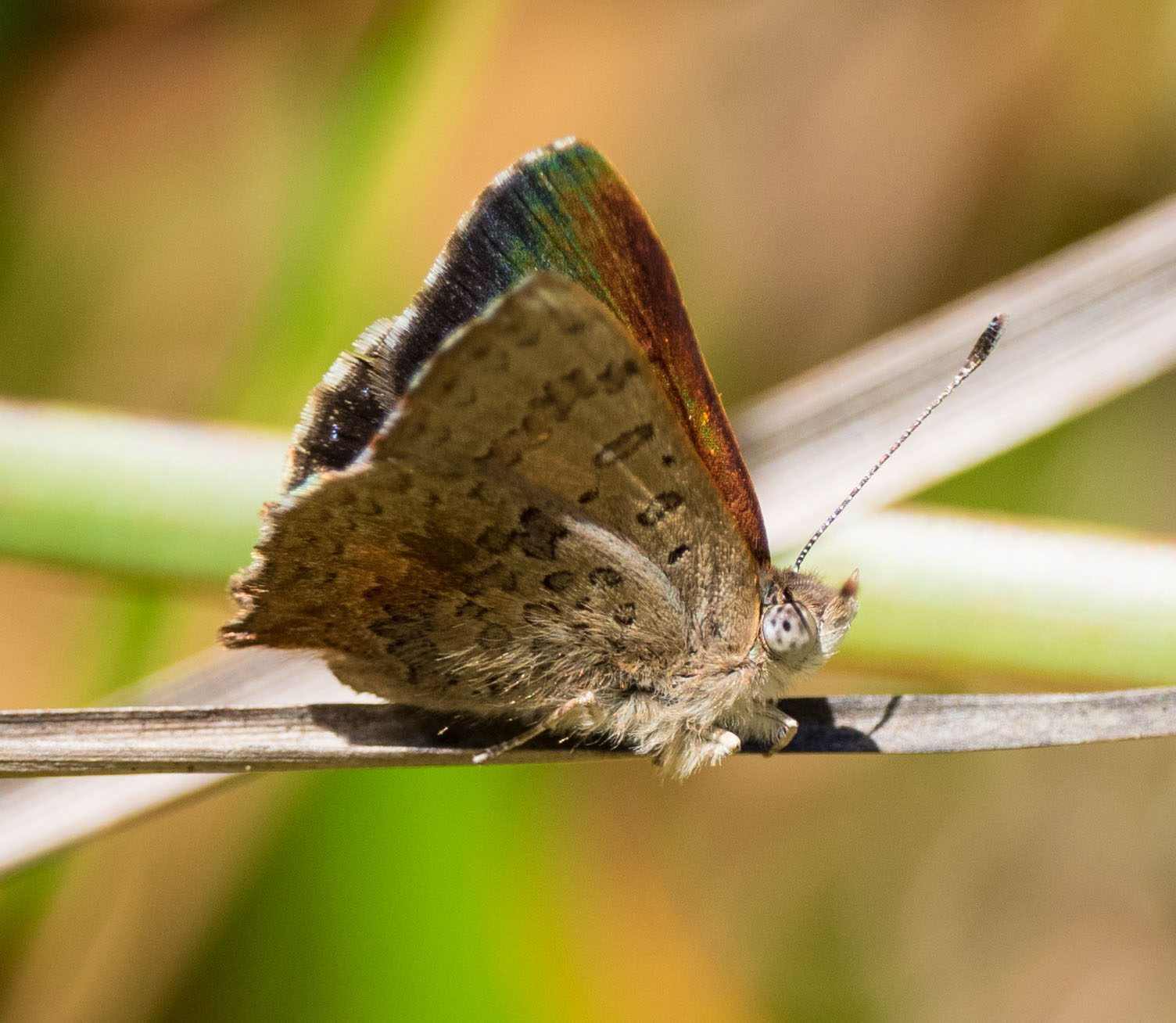
Rufous Whistlers return!
This week has seen yet another of the iconic Summer birds return to the forest. Rufous Whistlers have a large, musical repertoire so we always know when they're back.

Floral feast
I watched on as this old, battle-scarred male Swamp Wallaby devoured masses of newly-opened Indigofera flowers. (sigh). This is the same guy that we watched ripping into the flowering wattle last month.

Emerald Moth
This pretty species has been a common sighting for several weeks now. They fly to lights and so we often see them on the windows of the house. (I confess to laughing uproariously when Paul first showed me this photo).
Golden-fringed Emerald (Chlorocoma assimilis)

Taddies galore
The frog pond is teeming with tadpoles of all sizes. And some are soon-to-be frogs! This is a Southern Brown Tree Frog (Litoria ewingii), the species we showed in detail in earlier tadpole blogs.

Orchid season continues
Pink Fingers orchids (Caladenia carnea) are perhaps our most common orchid species here in the forest, and they made their first appearance last week.

Preening fairy wrens
These two Superb Fairy Wrens found a patch of late afternoon sun in which to dry and preen their feathers. Some males are in full breeding plumage, but this one has a way to go yet.

Bright Copper
A male Bright Copper resting between bouts of aerial display. Whenever another male Paralucia aurifer arrives on site, the two spiral about one another in a contest for which the rules are unclear.

Brand new butterfly
This is the first Yellow-spotted Blue butterfly I've seen this season. They'll soon be quite a common sight feeding on low-growing bushes and forbs.
(Candalides xanthospilos)

Pimelea
The host plant for the larvae of the Yellow-spotted Blue butterfly.

Wolf Spider
Whenever I check in on her during the day, this Tasmanicosa is peering out from her tunnel in the sandy soil. Perhaps she pounces on passing prey, although I imagine that at night she leaves the shelter and hunts in the open.

Southern Emu-wren
It was a special treat to see several of these tiny birds during a visit to Ben Boyd National Park this week.

Tall Leek Orchid
The Green Cape heath in Ben Boyd National Park is apparently ideal habitat for orchids. There are a number of orchids that we've only seen at this location - including this one, Prasophyllum elatum, as well as the following two orchids.

Now you see it...
Spotted Sun Orchid (Thelymitra ixioides) in all its glory at 12:03pm on the Green Cape heath.

...Now you don't
Exactly the same plant at 2:23pm. Sun Orchid flowers only open when the sun is in the right position in the sky.

Brown Beaks
A rather prosaic common name for what is a spectacular orchid. Its scientific name Lyperanthus suaveolens is a bit classier.

Erect Violet-bush
Hybanthus vernonii is a member of the Violet (Violaceae) family. The apparently single petal gives the flower a striking appearance. In fact, it has 5 petals, but one is much longer than the other 4.

Leafless Bossiaea
We have quite a few Bossiaea species at home. But this one, Bossiaea ensata, which we saw on the Green Cape heath, isn't amongst them. The leaves in this species have been reduced to tiny scales - a common strategy amongst plants growing in infertile, sandy soils to reduce water loss.

Blue Dampiera
This showy plant - Dampiera stricta - belongs to the family Goodeniaceae. Another Green Cape heath species.


















